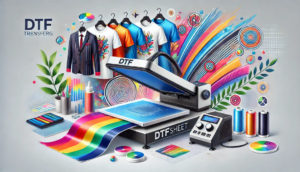In today’s competitive business landscape, optimizing your sales team’s performance is critical to achieving success. A well-implemented Sales Performance Management System
(SPMS) can be a game-changer for your organization. This comprehensive guide will delve into the world of sales performance management and the crucial role of Sales Performance Incentive Funds (SPIFs). By the end of this article, you’ll have a clear understanding of how to revolutionize your sales team’s performance using these powerful tools.
Understanding Sales Performance Management System (SPMS)
What is Sales Performance Management System?
A Sales Performance Management System is a comprehensive framework that helps organizations align their sales strategies, monitor sales team performance, and drive desired outcomes. It encompasses various elements, such as setting clear goals, performance measurement, compensation management, and coaching and development.
The Key Components of SPMS
Goal Setting: Effective goal setting is at the heart of SPMS. It involves defining clear and achievable sales targets, both individually and for the team as a whole.
Performance Measurement: SPMS relies on accurate data and analytics to assess individual and team performance. Real-time data is vital for making informed decisions.
Compensation Management: SPMS helps in designing fair and motivating compensation plans, including the use of SPIFs, which we’ll explore in detail later.
Coaching and Development: A good SPMS system supports coaching and development of sales professionals by identifying areas for improvement and providing actionable insights.
The Role of Sales Performance Incentive Funds (SPIFs)
What are SPIFs?
Sales Performance Incentive Funds (SPIFs) are a powerful tool within an SPMS that motivate and reward sales teams for achieving specific objectives. SPIFs are designed to encourage sales representatives to focus on selling specific products or services, meet certain quotas, or achieve other targets that align with the company’s goals.
Benefits of SPIFs
Motivation: SPIFs provide an extra layer of motivation for sales teams. By offering additional rewards, they encourage representatives to work harder and smarter.
Focus on Key Objectives: SPIFs help steer the attention of your sales force towards the most critical sales targets, ensuring that they’re aligned with your business objectives.
Quick Reaction to Market Changes: SPIFs can be quickly adjusted to respond to changing market conditions or to promote particular products or services.
Boost Team Morale: The competitive and rewarding nature of SPIFs can boost team morale, fostering a culture of achievement and camaraderie.
Implementing SPIFs Effectively
To maximize the benefits of SPIFs, consider the following best practices:
1. Define Clear Objectives
The first step in implementing SPIFs is to set clear and specific objectives. Whether it’s increasing sales of a particular product or reaching a sales quota, the objectives should be well-defined and measurable.
2. Transparent Communication
Transparency is key when introducing SPIFs. Sales representatives should be well-informed about the criteria for earning incentives and the rewards they can expect.
3. Monitor and Adjust
Regularly monitor the progress of SPIFs. If an objective isn’t being met or market conditions change, be prepared to adjust the SPIF to keep it relevant and motivating.
4. Fair and Attainable Rewards
Incentives should be both achievable and appealing to your sales team. Offering a mix of financial rewards, non-monetary incentives, and recognition can be effective.
How to Revolutionize Your Sales Team with SPMS and SPIFs
1. Setting SMART Goals
A fundamental aspect of SPMS is setting SMART goals: Specific, Measurable, Achievable, Relevant, and Time-bound. By establishing these criteria for your sales team, you provide them with a clear roadmap for success.
2. Real-time Performance Monitoring
Utilize technology to monitor the performance of your sales team in real-time. With data analytics, you can identify trends, strengths, and weaknesses, allowing you to make data-driven decisions.
3. Compensation Management
Design a compensation plan that aligns with your goals and motivates your sales team. SPIFs should be integrated into the compensation structure to provide that extra incentive.
4. Ongoing Coaching and Development
Invest in the development of your sales professionals. Regular coaching and training sessions can help them refine their skills and stay motivated.
5. Celebrate Achievements
Recognize and celebrate the achievements of your sales team. This not only boosts morale but also reinforces a culture of success.
6. Constantly Evolve
The business landscape is always evolving. Your SPMS and SPIFs should adapt to changing market conditions, sales strategies, and organizational goals.
Case Study: A Real-life Success Story
To illustrate the power of SPMS and SPIFs, let’s look at a real-life success story. Company XYZ, a software solutions provider, faced stiff competition in the tech industry. They implemented an SPMS and introduced SPIFs to drive sales of a new product.
By setting SMART goals, monitoring performance in real-time, and offering lucrative SPIFs, Company XYZ’s sales team achieved a 30% increase in revenue within the first quarter. The combination of a well-defined SPMS and motivating SPIFs allowed them to surpass their competitors.
Conclusion
A Sales Performance Management System, when combined with Sales Performance Incentive Funds, has the potential to revolutionize your sales team’s performance. By setting clear objectives, monitoring performance, designing motivating compensation plans, and fostering a culture of success, you can take your sales team to new heights.
In the ever-evolving business world, adaptability is key. Stay committed to refining your SPMS and SPIFs to ensure they remain aligned with your company’s goals and market dynamics. With the right tools and strategies, your sales team can not only meet but exceed expectations, ensuring your organization’s success in the long run.





Be First to Comment